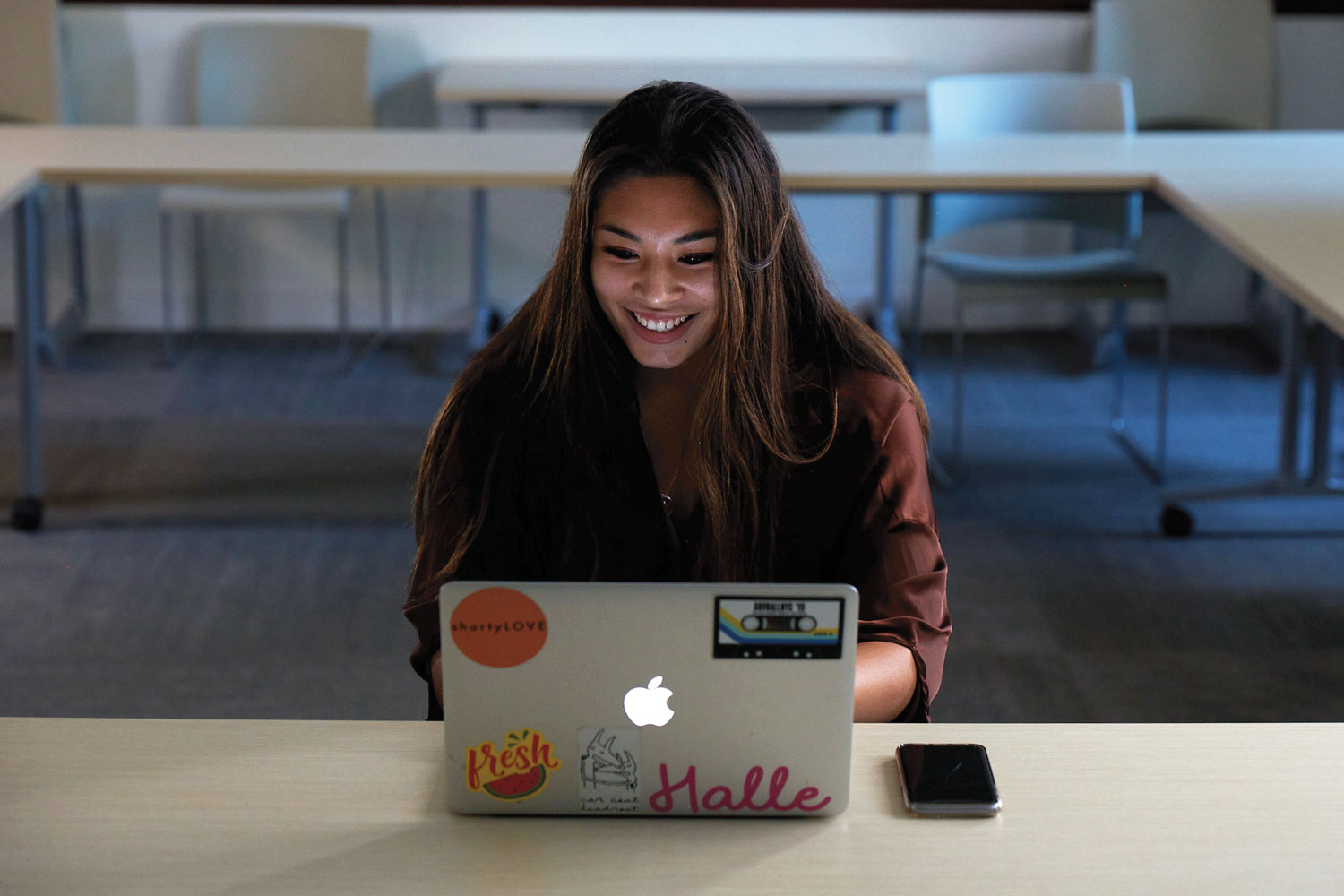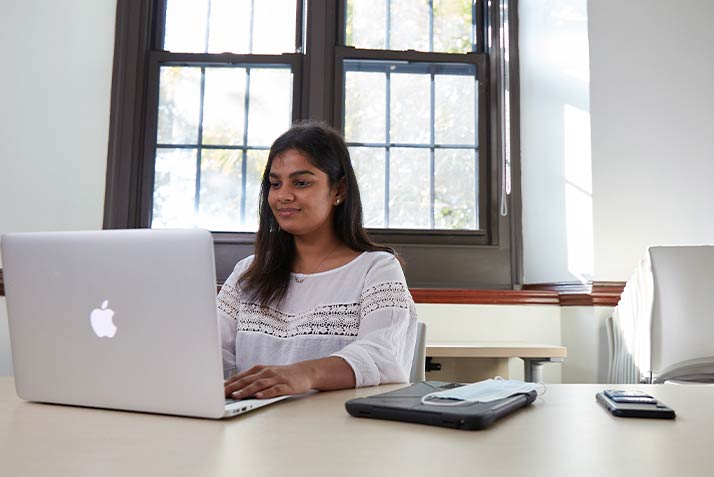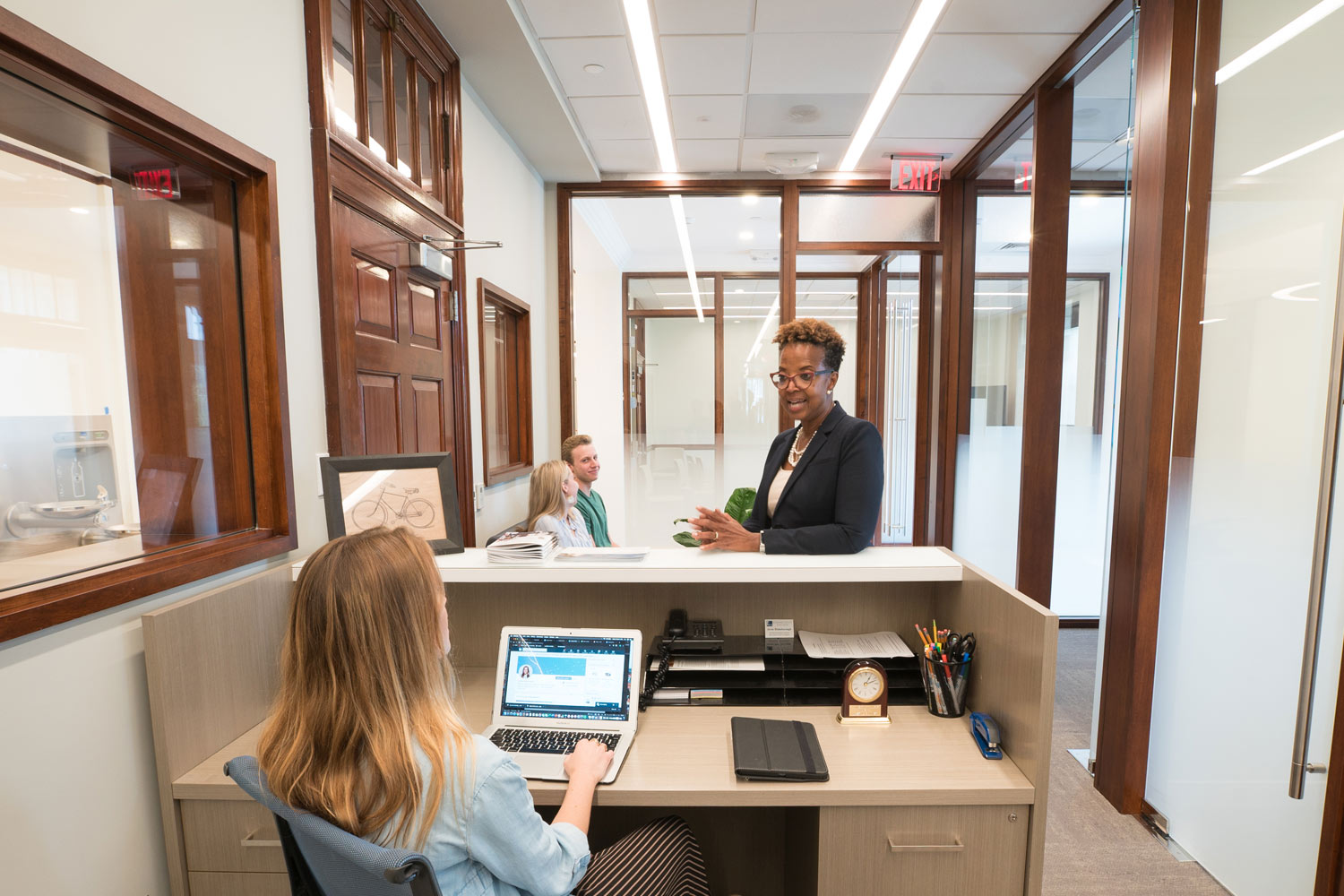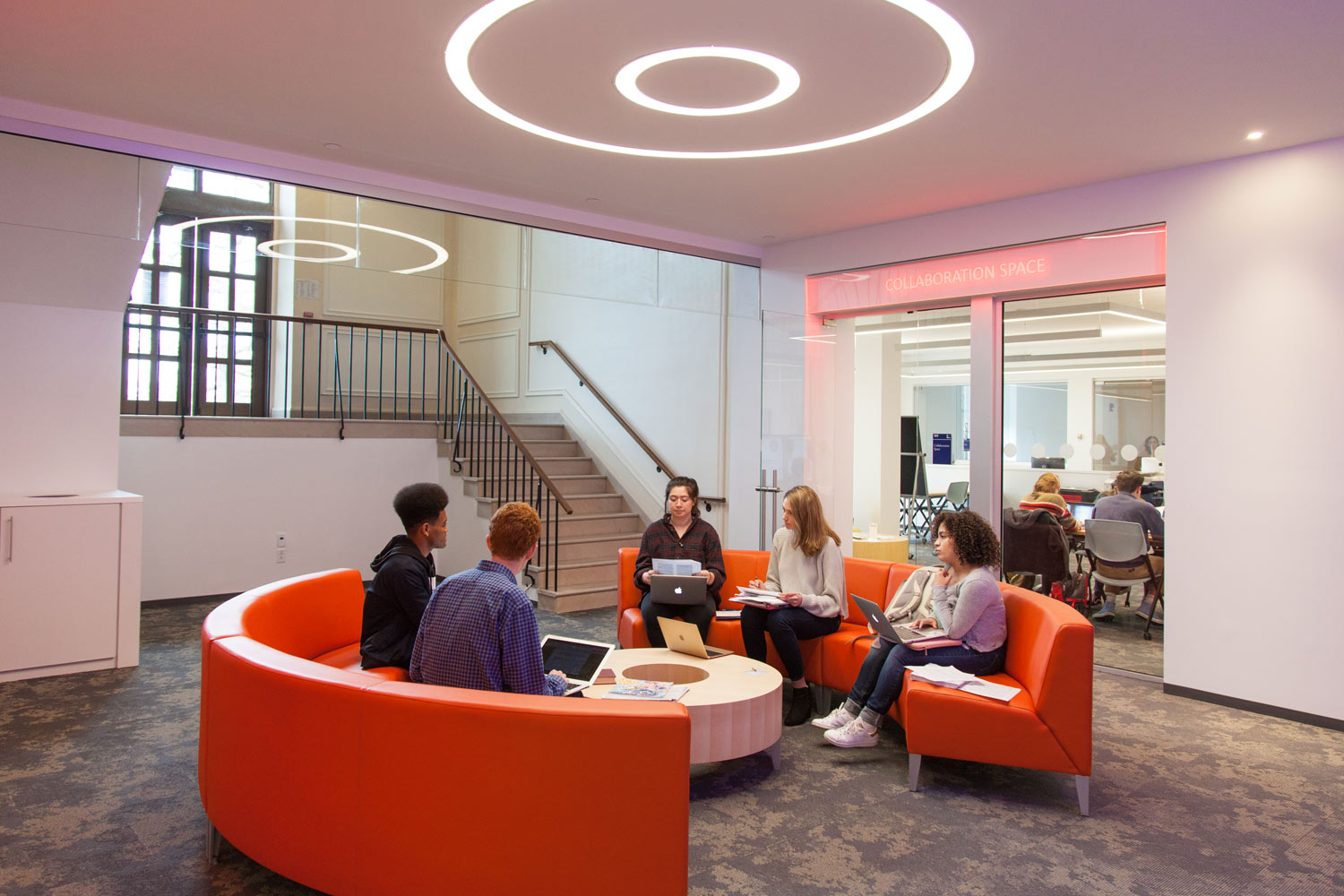Six Years of Momentum
A Story of a College Putting the Liberal Arts into Action
Halle Paredes ’21 knew before she even finished high school that she was going to be a doctor.
“I declared a major in biological sciences as early as I could,” she says.
But, oops: Halle “accidentally” took a philosophy class her first year at Conn. Bigger oops: She loved it. And not long after, Halle had to face up to something hard.
“I realized that the hard sciences actually weren’t for me. I panicked that I wouldn’t be able to do anything in health.”
But around the same time, Halle signed up for a new team-taught course in public health offered to students in any major. Before long, she began imagining a new way to approach her interests. Now, she has just embarked on a master’s in philosophy, politics and economics of health at University College London, with an eye toward a career shaping public health policy.
Priyanka Ramchurn ’21 was pretty certain, too. She arrived on campus from Mauritius with an interest in international law. But by the summer of Priyanka’s sophomore year, she had an internship focused on marine conservation in Colombia and found herself in a small fishing village. The locals were poor, but they had a rich asset: the ocean itself.
“The next summer, I landed an internship with the World Bank Blue Economy Group working with their ocean economic team,” she says. So now, rather than focusing on international law, she was taking a deep dive, so to speak, into finance. And environmentalism. And sustainability. And she’s not done; she’s now pursuing a master’s in international economics and finance at Brandeis, with intentions of going into consulting.
Experiences like Halle’s and Priyanka’s may seem like happy accidents, but their stories find their roots in a series of seminal actions taken at Conn starting in 2015. By then, President Katherine Bergeron had settled in after her first year as president, and there was a feeling of campus experimentation in the air. The idea of the liberal arts college had been around for centuries, and Conn had been one of its leading lights for the last 100 years. But 21st-century changes were taking hold—in technology, environmental sustainability, human migration, social justice and much more—and the College decided to challenge itself with the hardest questions, as the liberal arts themselves require.
This included, for the first time in 40 years, rethinking its curriculum. What would make it most relevant to the College’s core mission? To students’ career preparation? To their commitment to advancing justice? To their engagement with national and global challenges? In other words, how could Conn best help students meet their moment—this century?
One result was Connections, the faculty’s dramatic transformation of traditional introductory (“101”) courses that requires students, beginning with their first semester, to connect what they learn across their studies to real-world problems. The Pathways program was built on it, asking students starting sophomore year to pursue an expansive challenge alongside their major: to formulate a meaningful question that cuts across one of a dozen wide-ranging topics—covering everything from peace and conflict to data and society, from media and rhetoric to global capitalism—and study it across their coursework and in off-campus learning, such as study away or summer internships.
It was, in fact, Pathways that helped Halle and Priyanka navigate the surprising directions their interests took. And it all culminates with a senior-year presentation during the new All- College Symposium. Along the way, students have the support of not one adviser, as at most schools, but a team of them—faculty, staff and upperclass students. The dramatic progress in numerous areas over the past six years—in global education, sustainability, and the massive investments in career and new partnerships with New London, among other developments—all flowed from this fresh spirit of intentionality.
Any visitor to campus can see the physical fruits of this plan. Turn one direction and there’s the new Hale Center for Career Development, which is dedicated to connecting purposeful career engagement with students’ liberal arts journeys. Turn another, and there is the waterfront revitalization project, which, when completed, will enable students to make use of the College’s terraced property along the Thames in entirely new ways, from new facilities for recreation, rowing and sailing to even more extensive marine science study in this living laboratory. Turn yet another, and there’s the new Athey Center for Performance and Research, a $24 million project that is transforming Palmer Auditorium into a bustling hub for the arts. And beyond that, there’s Cro, which will soon undergo major renovations designed to create a dramatically reenvisioned center for the campus community.



